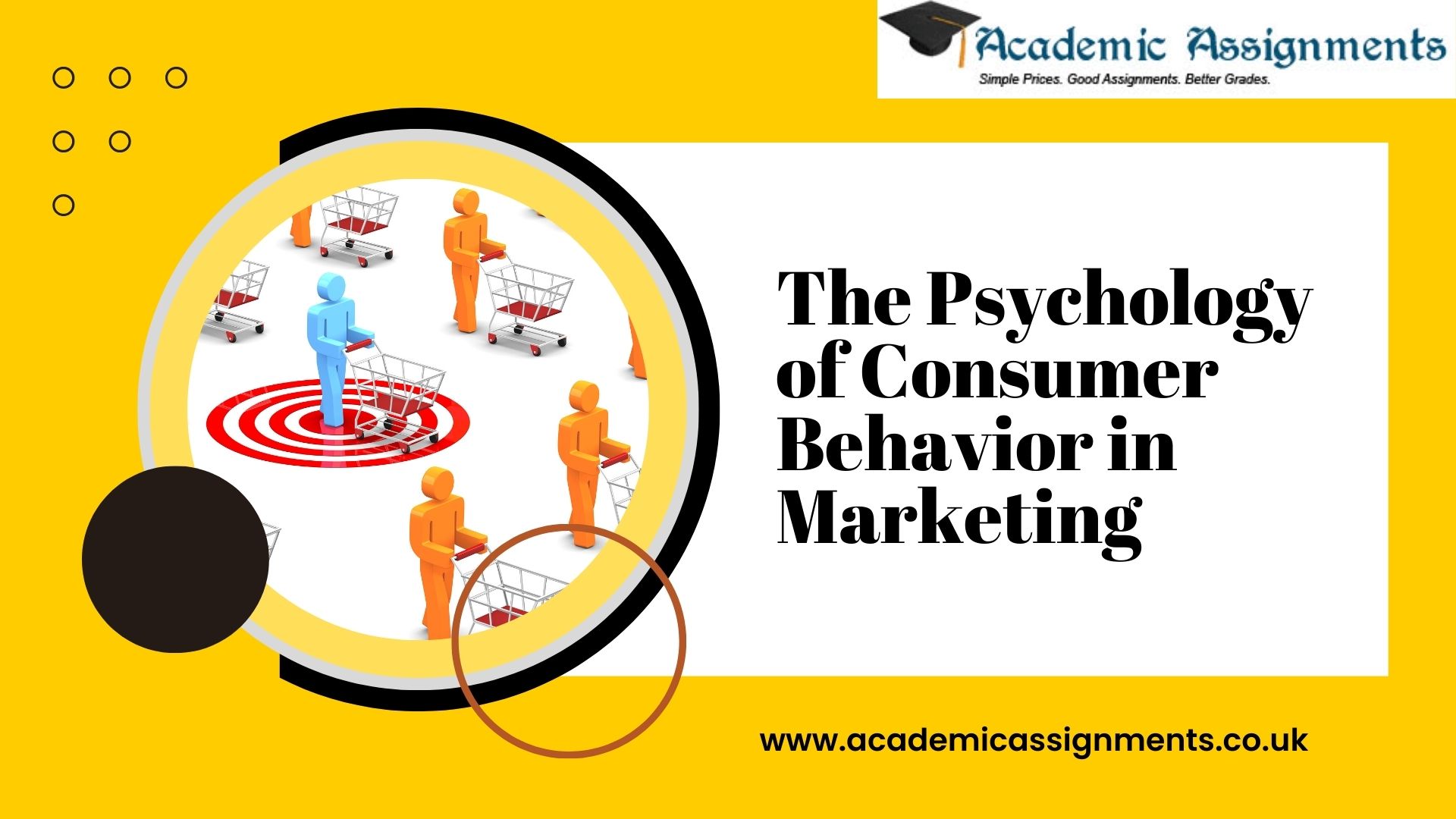The Psychology of Consumer Behavior in Marketing
Marketing is a basic part of any fruitful business. It helps to fabricate memorability, make client devotion, and increment deals. Making powerful marketing campaigns requires a profound comprehension of consumer behaviour and the psychology behind why individuals pursue buying choices.
In this article, we’ll investigate a few critical ideas in marketing psychology and give genuine instances of how they can be utilized to make effective marketing campaigns.
Consumer Behavior
Consumer behaviour is the investigation of how individuals pursue buying choices. This incorporates understanding the inspirations driving why consumers purchase specific items, the dynamic interaction they go through, and the assessments they make after the buy. By understanding consumer behaviour, marketers can make campaigns that resound with their ideal interest group and drive deals.
For instance, an organization selling athletic wear might target well-being-cognizant consumers and focus on their actual health. The marketing effort could feature the advantages of their items, like better solace and execution during exercises, to engage this inspiration.
Perception
Perception is how individuals decipher and get a handle on marketing messages. It’s fundamental for marketers to comprehend how consumers see their messages, including their consideration regarding the message, their translation, and their review of it later on. Marketers can utilize this data to make eye-catching, important, and straightforward messages.
For instance, an organization selling another brand of soda pops might make an advertising effort to underline its item’s one-of-a-kind taste and fixings. The notices could highlight splendid varieties and eye-getting designs to catch consumers’ consideration and make the message more noteworthy.
Emotion
Emotions assume a pivotal part in forming consumer behaviour. Positive emotions like happiness and fervour can improve the probability that a consumer will make a buy, while gloomy emotions like trepidation and uneasiness can lessen the possibilities. Marketers can take advantage of these emotions by making messages that bring out unmistakable inclinations in their interest group.
For instance, a home security organization might make a marketing effort that spotlights the feeling of dread toward break-ins and the genuine serenity that their security frameworks give. By taking advantage of the emotion of dread, they can improve consumers’ probability of buying their items.
Persuasion
Persuasion is the speciality of affecting consumer mentalities and behaviours. There are a few convincing strategies that marketers can utilize, like social verification (showing that others are utilizing an item), correspondence (giving something as a trade-off for a buy), and shortage (making a need to keep moving by restricting accessibility). Marketers can use these procedures to make campaigns bound to influence consumer behaviour.
For instance, a dress retailer might limit clients who allude to a companion to their store. Using the correspondence rule, they can urge clients to get the news about their items and drive deals.
Branding
Branding is the turn of events and the executives of a brand’s picture and character. Marketers need to make areas of strength that consumers can distinguish and interface with. This can be achieved by making a positive relationship with the brand and building client dedication through steady informing and branding endeavours.
For instance, Apple Inc. is known for its smooth and inventive items and its particular logo and marketing campaigns. By reliably introducing areas of strength for an unmistakable brand, Apple has constructed a dedicated client base and has become the most significant organization on the planet.
Advertising
Advertising is the utilization of paid media to convey marketing messages. Marketers should choose the right channels and develop inventive techniques to reach their ideal interest group. The objective is to make advertising campaigns that are eye-catching, essential, and viable for driving deals.
For instance, a cheap food chain might send off a cross-country advertising effort through TV ads, virtual entertainment, and in-store advancements. The ads could highlight their menu in a tomfoolery and engaging way, while the in-store advancements could offer limits or gifts to clients who buy specific things. Utilizing a multi-channel approach, the cheap food chain can successfully contact a wide crowd and drive deals.
Conclusion
In conclusion, the psychology behind marketing is a basic part of making viable marketing campaigns. By figuring out consumer behaviour, perception, emotions, persuasion, branding, and advertising, marketers can make campaigns that resound with their ideal interest group and drive deals.
Whether an entrepreneur or a marketing proficient, a profound comprehension of marketing psychology can help you accomplish your marketing objectives and develop your business.
Author Bio: Mark Edmonds is an accomplished academic writer and subject matter expert at Academic Assignments, providing students with top-notch marketing assignment help. With extensive experience in the field, Mark deeply understands the complexities of marketing and management. His latest article, “The Psychology of Consumer Behavior in Marketing,” showcases his expertise in the field, providing valuable insights into consumer behaviour. Mark’s dedication to assisting students in achieving their academic goals is evident in the quality of his writing, and Additionally, Mark provides exceptional management assignment help, demonstrating his ability to assist students in various academic areas.

 Blogs
Blogs





